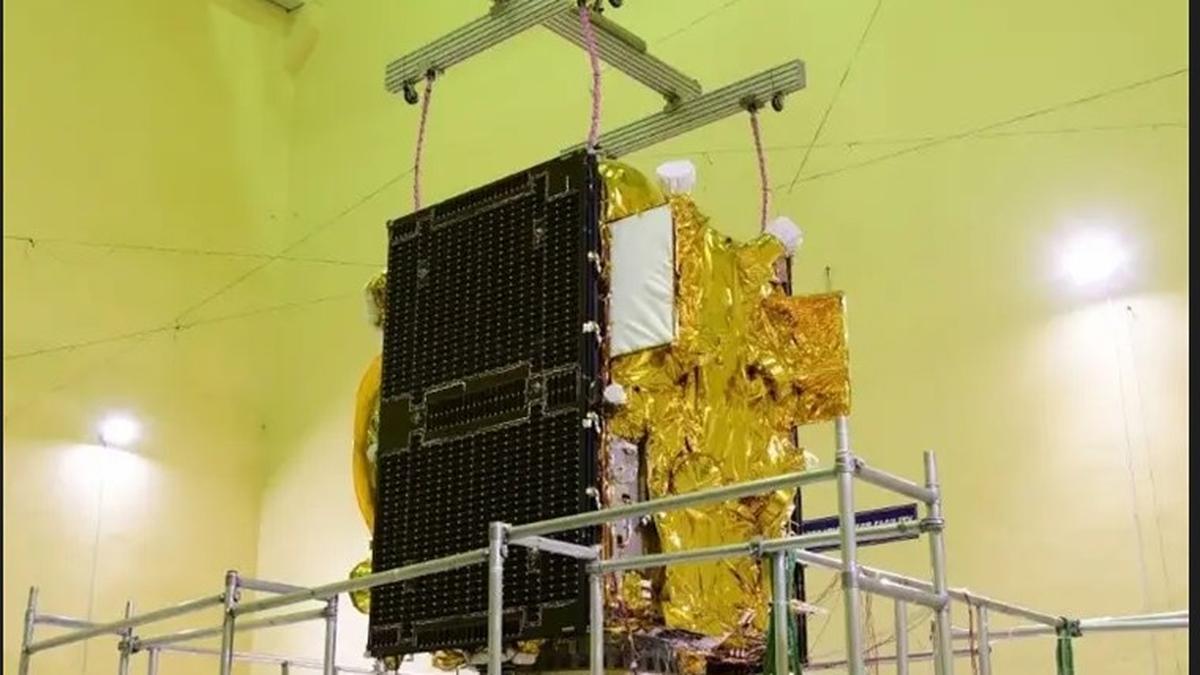NVS-02 undergoing a vibration test. Photo: ISRO
Officials at the Indian Space Research Organisation (ISRO) say they are looking to launch at least three satellites before 2026-end, to replace defunct satellites that are part of the ‘Indian GPS’ or Navic (Navigation with Indian constellation) system. However, there seems to be a key element impeding the launch — the development of indigenous clocks.
These high-precision clocks — now proposed at five per satellite — are what provides accurate timing (and hence location) services to users on earth. The Navic satellites provide more accurate location services to the military and slightly less accurate ones for civilian purposes.
Nine satellites of the Indian Regional Navigation Satellite System (IRNSS), informally called Navic, have been launched since 2013. Eight of them reached their intended orbit. The last of this constellation of satellites (IRNSS-1I) was launched in 2018. These constellation of satellites are akin to the Russian GLONASS, the Chinese Beidou, the American GPS and European Galileo constellation of satellites to provide location services. However, the Navic, is expected to do so only within India and a radius of 1,500 km. This is however viewed more as a fall back system in the case of future global conflicts and India being denied access to these foreign constellations.
Last month, the ISRO revealed via a Right To Information request that five of the Navic satellites were completely defunct with all three of their clocks in each satellite not working. In one of the three satellites with functioning atomic clocks, two of the three clocks have failed. Only two satellites of the constellation, therefore, have functional atomic clocks. The atomic clocks in this constellation of satellites were imported by the ISRO from the firm SpectraTime.
For the next series of satellites to replace the impaired and ageing fleet of IRNSS satellites —two of the three being used have passed or are close to their rated shelf life of 10 years though it’s possible for these systems to function beyond — the ISRO has decided to install indigenously developed rubidium clocks.
“Each satellite will have five clocks though we are still in the process of developing them,” Nilesh Desai, Director, Space Applications Centre, a key part of the ISRO, told The Hindu on the sidelines of a conclave in Delhi to commemorate National Space Day on Saturday.
Another official familiar with the ISRO said that while the rubidium clocks are based on an indigenous design, there were key components that needed to be imported and this was contributing to procurement challenges and delays in commissioning.
So far, to replace its decrepit fleet of IRNSS satellites, ISRO has launched two satellites NVS-01 in May 2023 and NVS-02 in January 2025. Only NVS-01 successfully reached its designated orbit and is working as intended, with NVS-02 failing to reach the specific orbit required to function as a navigational satellite.
By 2040, India is aiming to launch at least a 100 satellites, several of them to provide earth imaging and communication services for both government and private sector applications.
Published – August 23, 2025 09:49 pm IST
